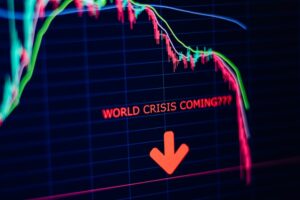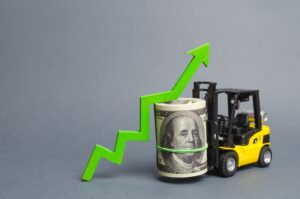Green finance and the circular economy are two concepts that have gained increasing attention in recent years. Both are aimed at promoting sustainability and addressing the challenges of climate change and resource depletion. In this blog post, we will explore the interplay between green finance and the circular economy, and the benefits that arise from their symbiotic relationship.
What is the Interplay between Green Finance and the Circular Economy?
Green finance refers to the mobilization of financial resources towards environmentally sustainable projects and initiatives. It encompasses various financial instruments, such as green bonds, green loans, and sustainable investment funds. The circular economy, on the other hand, is an economic model that aims to close the loop of resource use and minimize waste generation. It promotes the reuse, recycling, and repurposing of materials and products to maximize resource efficiency.
The interplay between green finance and the circular economy lies in their shared goal of promoting sustainability. Green finance provides the financial resources needed to implement circular economy practices, while the circular economy provides the framework for utilizing those resources efficiently. Together, they form a powerful combination to address environmental challenges and promote sustainable development.
Green Finance: Mobilizing Financial Resources to Support Sustainability
Various Financial Instruments Used for Green Finance
Green finance utilizes various financial instruments to mobilize funds for sustainable projects and initiatives. One such instrument is green bonds, which are fixed-income securities issued to finance environmentally friendly projects. These projects can include renewable energy installations, energy-efficient buildings, sustainable transportation, and waste management systems.
Another financial instrument used for green finance is green loans. These loans are specifically designed to finance projects that have a positive environmental impact. They can be used to fund renewable energy projects, energy-efficient upgrades, and sustainable infrastructure development.
Sustainable investment funds are also gaining popularity as a means of green finance. These funds invest in companies that demonstrate strong environmental, social, and governance (ESG) practices. By directing capital towards sustainable businesses, these funds encourage companies to adopt environmentally friendly practices and support the transition to a circular economy.
Financial Institutions in Supporting Sustainable Development
Financial institutions play a crucial role in supporting sustainable development through green finance. Banks, for example, can provide loans and credit facilities to businesses and individuals for sustainable projects. They can also offer financial advice and expertise to help clients navigate the complex landscape of green finance.
Furthermore, financial institutions can create specialized departments or divisions dedicated to green finance. These units can focus on promoting sustainable investment opportunities, developing innovative financial products, and providing technical assistance to clients. By integrating sustainability into their core business strategies, financial institutions can drive the transition to a more sustainable and circular economy.
The Circular Economy: Closing the Loop & Maximizing Resource Efficiency
What is the Circular Economy?
The circular economy is an economic model that aims to minimize resource consumption and waste generation by closing the loop of resource use. It is based on the principles of designing out waste and pollution, keeping products and materials in use, and regenerating natural systems.
In a circular economy, products are designed to be durable, repairable, and recyclable. Materials are kept in use for as long as possible through recycling and repurposing. Waste is seen as a valuable resource, and efforts are made to extract maximum value from it through recycling and composting.
Adopting Sustainable Consumption & Production Practices
To achieve the goals of the circular economy, it is essential to adopt sustainable consumption and production practices. This involves reducing the overall consumption of resources, minimizing waste generation, and promoting the use of sustainable materials and technologies.
Businesses can play a significant role in driving the transition to a circular economy by adopting sustainable production practices. This can include using renewable energy sources, optimizing resource efficiency, and implementing closed-loop production systems. By designing products with a focus on durability, repairability, and recyclability, businesses can contribute to the circular economy and reduce their environmental impact.
Consumers also have a role to play in the circular economy by making informed choices and adopting sustainable consumption habits. This can include buying products with a longer lifespan, repairing and maintaining items instead of replacing them, and recycling or repurposing materials whenever possible.
Challenges in Navigating the Interplay
Ensuring Alignment with the Principles of the Circular Economy
One of the challenges in navigating the interplay between green finance and the circular economy is ensuring alignment with the principles of the circular economy. While green finance provides the financial resources needed to implement circular economy practices, it is essential to ensure that the funded projects are truly circular in nature.
This requires careful evaluation and due diligence to ensure that projects funded through green finance are designed to minimize resource consumption, maximize resource efficiency, and promote the reuse and recycling of materials. Financial institutions and investors need to assess the environmental impact of the projects they fund and ensure that they align with the principles of the circular economy.
Factors Influencing the Outcome
The outcome of the interplay between green finance and the circular economy is influenced by various factors. One of the key factors is the availability of financial resources. Sufficient funding is crucial to support the implementation of circular economy practices and drive the transition to a more sustainable economy.
Government policies and regulations also play a significant role in shaping the interplay between green finance and the circular economy. By implementing supportive policies, such as tax incentives and subsidies for sustainable projects, governments can create an enabling environment for green finance and the circular economy to thrive.
The level of awareness and understanding of green finance and the circular economy among businesses and individuals is another important factor. Education and awareness-raising efforts are needed to ensure that stakeholders understand the benefits of the interplay and are motivated to participate in sustainable initiatives.
Conclusion
The interplay between green finance and the circular economy holds great potential for promoting sustainability and addressing the challenges of climate change and resource depletion. Green finance provides the financial resources needed to implement circular economy practices, while the circular economy provides the framework for utilizing those resources efficiently.
Financial institutions, such as JPMorgan Chase, play a crucial role in supporting the interplay between green finance and the circular economy. They can provide the necessary funding, expertise, and guidance to businesses and individuals looking to adopt sustainable practices and drive the transition to a circular economy.
In conclusion, the interplay between green finance and the circular economy offers a promising path towards a sustainable future. By mobilizing financial resources and adopting circular economy practices, we can create a more resilient and resource-efficient economy that benefits both people and the planet.







